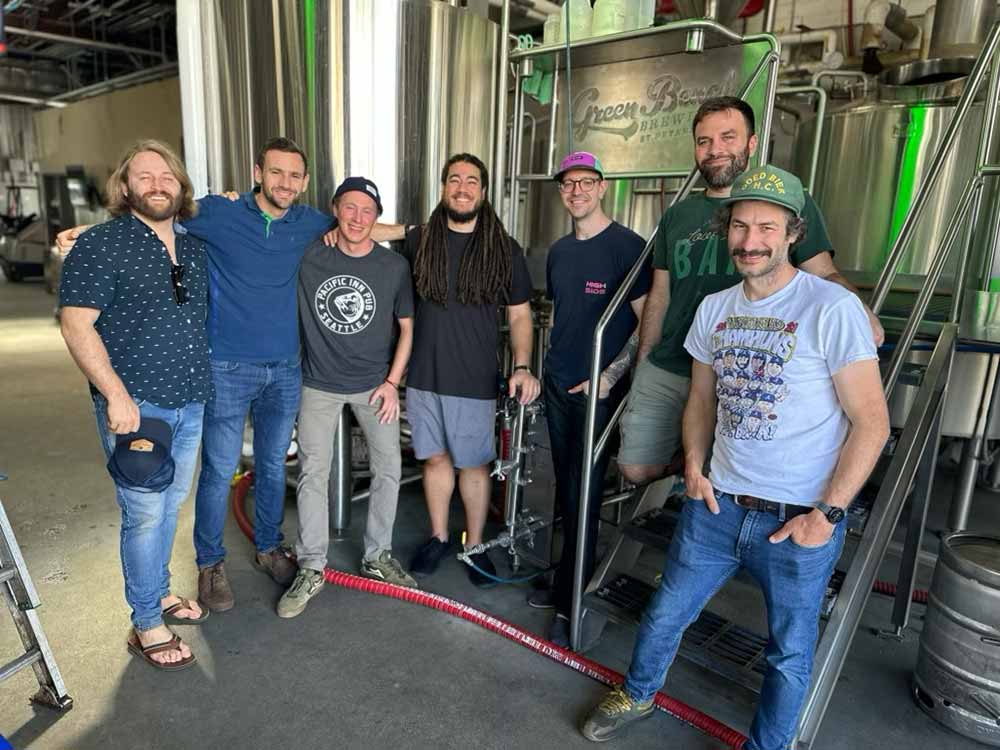
Over the years, beer collabs have become the norm in the industry. Whether partnering with another brewery, or several, with musicians, or entertainers, you name it, some brewery has done it.
A successful brewery collab no longer means just partnering with anyone to make a beer. Today, breweries are rewriting the definition of beer collabs, striving to go beyond simply brewing.
Experts at Southern Grist and Monday Night Brewing—a couple of breweries that have worked on a slew of their own collaborations over the years—explain what they see as the new frontier of craft beer collabs.
(Photography courtesy of Peter Kiley, Brewmaster Monday Night Brewing)
What We’ll Cover in This Piece:
Affordable, Industry-Leading Brewery Software
Who Do You Choose for a Beer Collaboration?
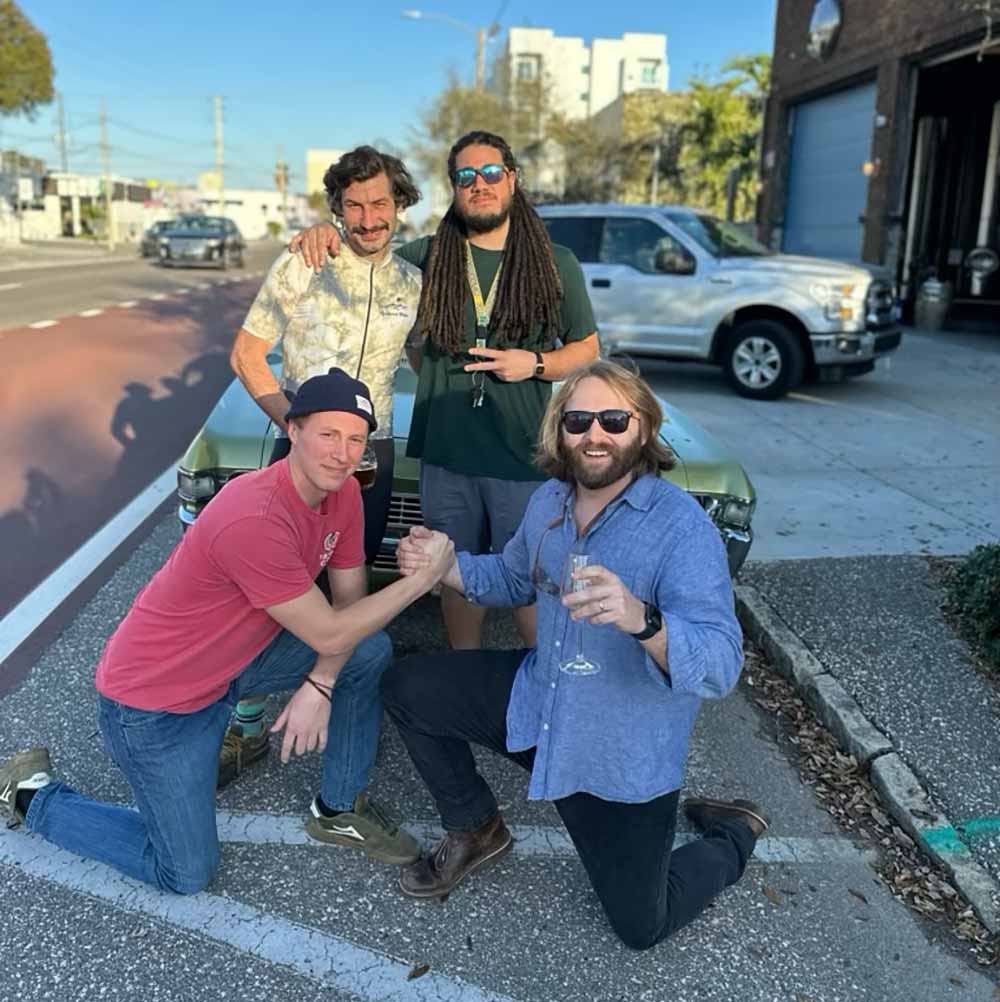
Photography courtesy of Peter Kiley | Monday Night Brewing
“From my point of view, I would never just meet someone and say, ‘Let’s make a beer together,’” Monday Night Brewing Brewmaster Peter Kiley says.
Kiley prefers to connect with other potential collaborators—whether brewers in the industry or even musicians or artists.
“A collab should be a byproduct of building a relationship. There should be giving, taking, and sharing,” he says. “I find it to be a turnoff when I meet someone for the first time and they ask to make a beer together … you should do it because you care about a person.”
Monday Night Brewing has done beer collaborations with hip-hop artists, chefs, artists, and all kinds of people from different walks of life. For artists, particularly, Kiley likes to work with those outside the industry.
“They possess something I deeply care about: emotional intelligence,” he says. “They’ve experienced rejection from others about something they were proud of. Once you shed that skin, that’s when you do amazing work.”
All this selection, according to Kiley, leads to inspired work. The beer brings out a truth and tells a story in the flavor and architecture of the craft, he says.
Southern Grist Founder and Production Manager Jared Welch seconds Kiley’s point.
“It has to be someone I want to hang out with first and foremost,” Welch says. “We don’t do collabs with people we don’t have personal connections with.”
Welch adds, “Most of the festivals that we go to, we see the same brewers over and over and over. You build this personal relationship with these people. They just happen to be in the same industry. So it all starts with this really close personal relationship.”
Being in Nashville, aka Music City, Southern Grist has also collaborated with musicians. While in the industry, you seek those personal connections; when a band you’ve heard on the radio coming into work asks you to do a beer with them, you can’t say no.
“The musicians sometimes hit us up, and I’m like, ‘Wait, you want us to brew a beer for you?’” says Welch. “I heard you on the radio last night. Of course, we’ll brew a beer with you.’ That’s pretty cool!”
Welch says, obviously, they are not best buds with musicians, but working with them touches an area they can’t in the craft beer industry.
“We’re talking cross-marketing at this point,” Welch says. “We’re getting into this whole new segment. It’s touching people who would not normally ever know who Southern Grist is by doing these collabs outside the industry.”
Why Should a Brewery Do a Beer Collaboration?
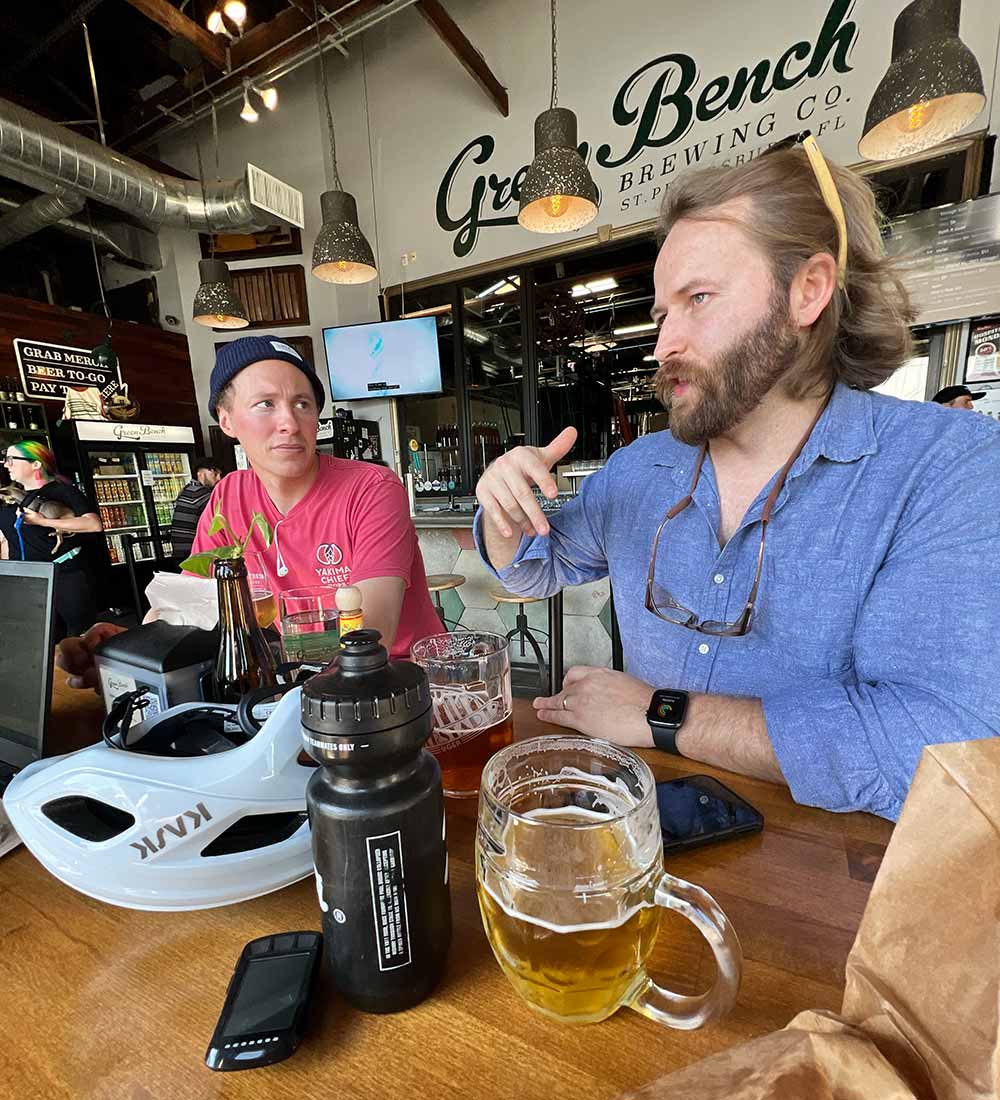
Photography courtesy of Shawn Bainbridge | Halfway Crooks Beer
Kiley looks explicitly to the intangibles as to why a brewery should do a beer collaboration.
“When doing a collaboration, you should look to two things: Do their values align with our values, and is this someone I could spend a day with?” he says. “When those come together, the real magic comes, and it shows in the beer.
Conversely, Kiley added why you shouldn’t do a beer collaboration.
“You can do [collaborations] for the right or wrong reason,” he says. “The wrong reason is because the [other brewery’s] brand is hot, or you just want to get knowledge from them.”
Kiley says there was a time when a younger version of himself did collaborations with the wrong intentions, but now he views them more clearly.
“It’s a relationship. In a relationship, there’s give and take,” he says. “When I do a collab, I set out to learn at least one thing and teach at least two things. It’s so damn stimulating, especially when you do it for the right reasons.”
Welch views personal relationships as an essential aspect of why brewers should collaborate.
“I prefer one-on-one collaborations, hands down. Let’s dig a little bit deeper [and] hang out,” he says.
He says it’s easier to open up from there, and the two sides share knowledge and improve their craft.
What Benefits Come from a Beer Collaboration?
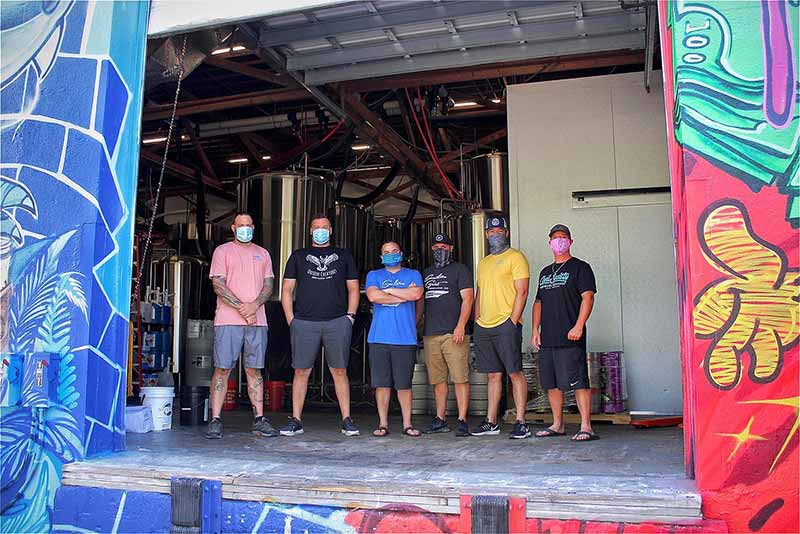
Photography courtesy of Southern Grist Brewing Company
Kiley notes that when you’re grinding at a brewery, brewing the same flagship beers, it can sometimes be draining. Collaborations are a departure from the norm, invigorating brewers.
“Collaborations are the lifeblood,” he says. “It’s one of the greatest aspects of craft brewing. It’s so true to this industry.”
Kiley, who used to be in the wine and distilling industries, says people don’t recognize collaborative efforts in any other industry.
“Craft beer acts as a conduit to building a relationship,” he says.
Kiley adds that the benefit of collabs is not the tangible of the beer but what you take from it.
“I want to learn something, and I want to teach something [when I collaborate],” he says. “You spend a lot of time talking, emailing, and putting the beer together. It’s so stimulating. It can be so many things, but if it’s intentional, and for the fans, it’s a great thing.”
Welch points to a fledgling Southern Grist that sought beer collaborations for one main benefit: knowledge.
“It kind of depends on where you are in your lifecycle as a brewery,” he says. “When I look back at the early days of Southern Grist … and we saw the growth of the company was about to happen, we knew we were going to scale up and build like a production facility. All the collaborations I did at that time helped fuel my knowledge.”
Over time, Welch says they would collaborate with breweries they met at various festivals, using those efforts to build the brand and market themselves.
But when Southern Grist grew comfortable with their brand, Welch says brewing with folks he considered true friends went back to sharing knowledge on styles and processes.
“Hey, how are you brewing your lagers the way you are?’ or ‘How are you getting that juicy characteristic?’ or ‘Tell me about your smoothies,’” Welch explains. “It was a two-way road. We sought knowledge, and breweries would come to us for info on our fruited sours or some of our barrel-aged stouts.”
How Do Beer Collaborations Work Logistically?
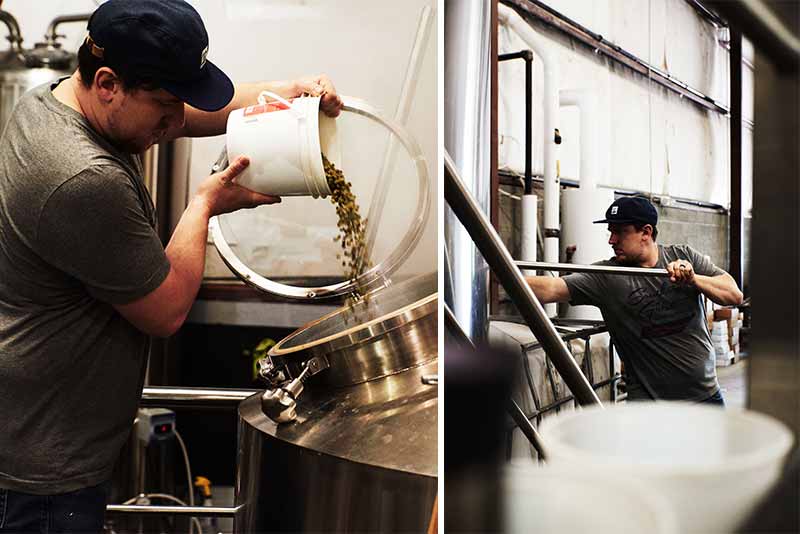
Photography courtesy of Southern Grist Brewing Company
You can execute a collaboration beer in several ways—the breweries brew the beer at their facilities separately, or all the breweries meet at one place and brew together—but ultimately, the logistical burden falls on the company hosting the session.
“If we make it at my house, I’m responsible for labels, branding, marketing, selling, etc.,” Kiley says. “When we do that, there’s no financial obligation to the other brewery.”
However, there is added pressure on the host brewery.
“We have a responsibility to their brand,” he adds. “We do not want to ding their brand.”
According to Kiley, ideation is the most involved part.
“I’m open to anything as long as it’s intentional and agreed upon,” he says.
Suppose Monday Night Brewing collaborates at another facility, and the logistical aspects fall on the other company. In that case, he says he makes regular check-ins, “not as a micromanager, but as an enthusiast.”
Welch says while together, collabing breweries can do much of the work early on; the host brewery brews the beer.
“A lot of collaborative process happens on the front end,” he says. “If I’m going to that brewery or they’re coming here, we’re hanging out for the day, doing the recipe that has already been agreed upon, but then diving deeper into either specific processes or maybe a decision that’s up in the air for the brew day.”
Welch adds, “My idealistic collaborative process is that we are together on the brew day, hanging out, learning, and sharing as much knowledge as possible.”
Welch also likes to be hands-on when collaborating at other breweries.
“If you talk to any brewery we collab with, I try to mash out every single brewery I’ve ever collaborated with,” he says. “Not only just kind of getting my hands dirty and breaking a sweat but also to give the brewers there a break.”
Both Kiley and Welch say that the logistical nature of choosing names also happens during the creative process—or even on brew day. They both say they try and have fun creating the beer’s title.
Do Beer Collaborations Create a Spike in Sales?
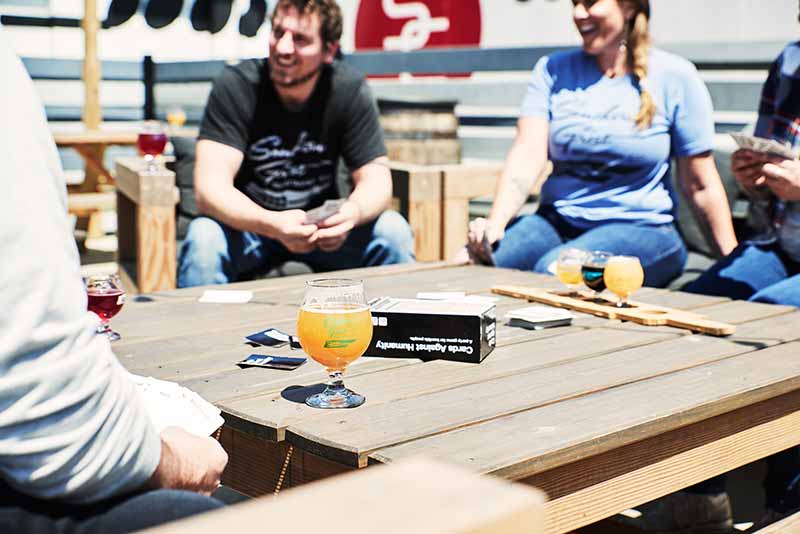
Photography courtesy of Southern Grist Brewing Company
While collaborations can be a draw for some, Kiley says it will not lead to an overwhelming revenue stream.
“If there’s anything to gain, it’s personal relationships,” Kiley says. “There’s no real financial boon. There’s an increase in engagement, an increase in trust with consumers, and an increase in relationship [with whom you are collaborating]. If we don’t make a buck but get all those, that’s awesome.”
Welch says that collaborations used to have a direct correlation with an uptick in sales, but the times have changed.
“We don’t see it quite as impactful as it used to be, but it certainly never hurts,” he says. “It definitely grows our social media engagement, which is great. I mean … breweries are getting a little bit less exposure than they were a couple of years ago on social media platforms. It’s always good when you can get some additional clicks.”
What Has Been Your Most Successful Beer Collaboration?

Bus Beer collab between Monday Night, Green Bench, Schilling, Threes, Cohesion, and Halfway Crooks | Photography courtesy of Grace Weitz | Hop Culture
Kiley answered without hesitation how a six-brewery collaboration with Monday Night Brewing, Green Bench, Schilling Beer Co., Threes Brewing, Cohesion Brewing, and Halfway Crooks Beer was an unforgettable experience that led to the creation of Bus Beer.
A 4.4% ABV Czech-style pale lager, Bus Beer came together after members of the six breweries joined a mission trip to the Czech Republic, bringing American and Canadian brewers to the country to learn about Czech beer, ingredients, and culture.
All six breweries met at Green Bench in St. Petersburg, Florida, for the collab to share ideas and debate over the small things. It’s those experiences that Kiley deems a success.
“That’s the best beer-making you can do when the devil’s in the details,” he says. “When you find yourself in that room, and you’re sharing this, creating that, you break bread, get loose … How is that not the definition of success?”
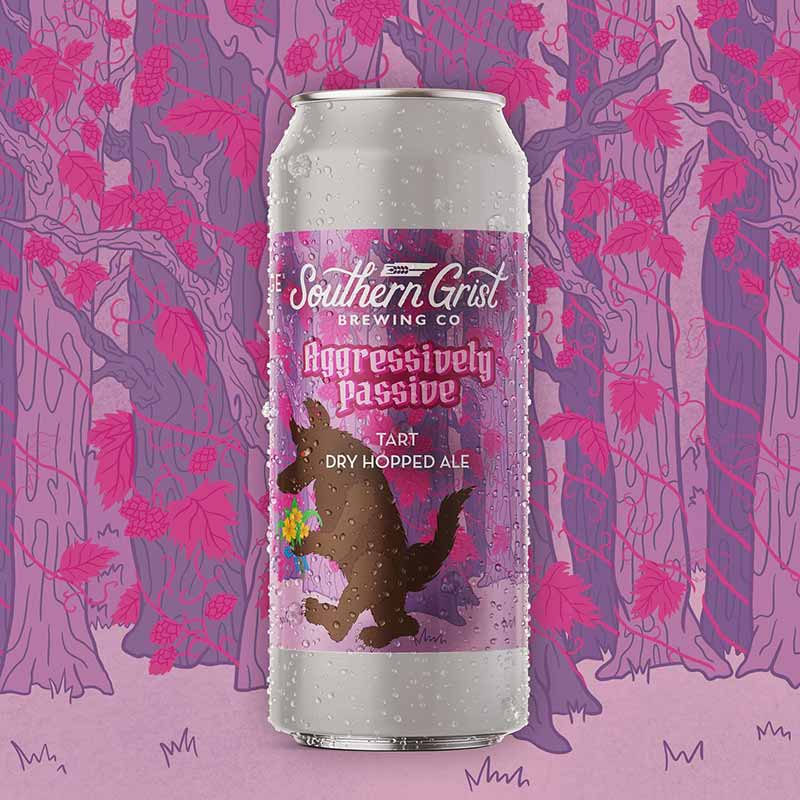
Image Courtesy of Southern Grist Brewing Company
Welch says a recent collaborative effort between Southern Grist and New Image happened during this year’s CBC event in its hometown of Nashville. The two sides worked together to create a dry-hopped kettle sour IPA.
During CBC, Welch says they conducted a “fun, hands-on experiment” where they blended Southern Grist’s flagship IPA with a base sour recipe they used. Ultimately, both sides brewed their beers at their own facility, resulting in Southern Grist’s Aggressively Passive and New Image’s Passively Aggressive.
“I think about peak collaboration and that one, we just knocked it out of the park. It was such a blast,” Welch says.



